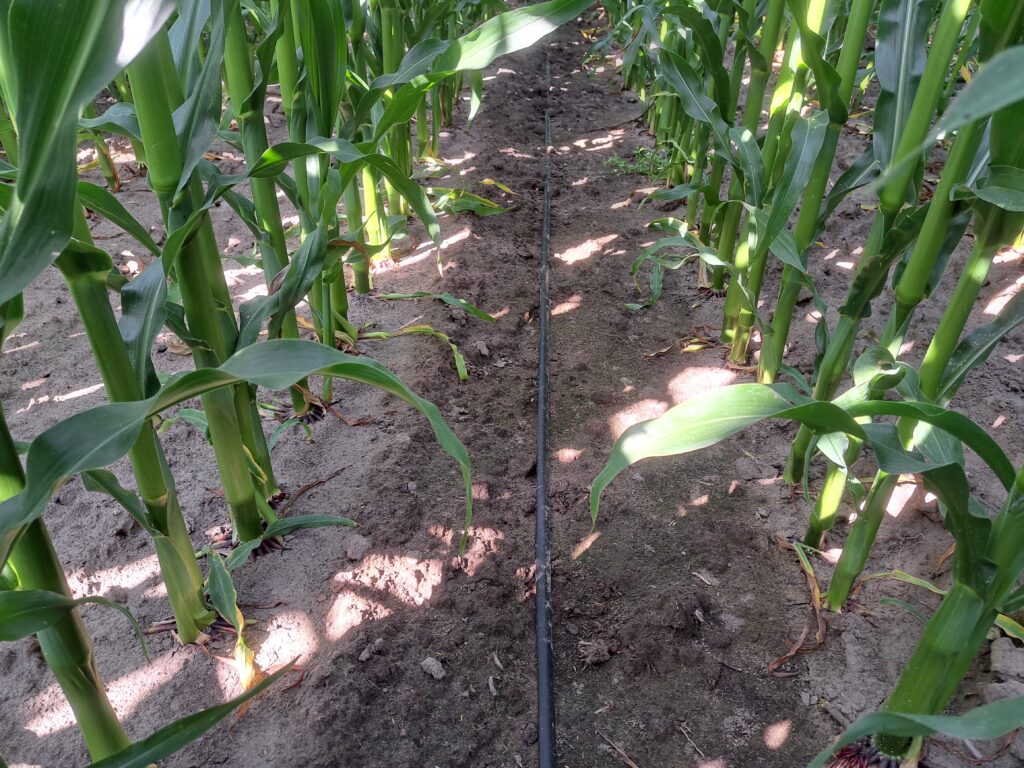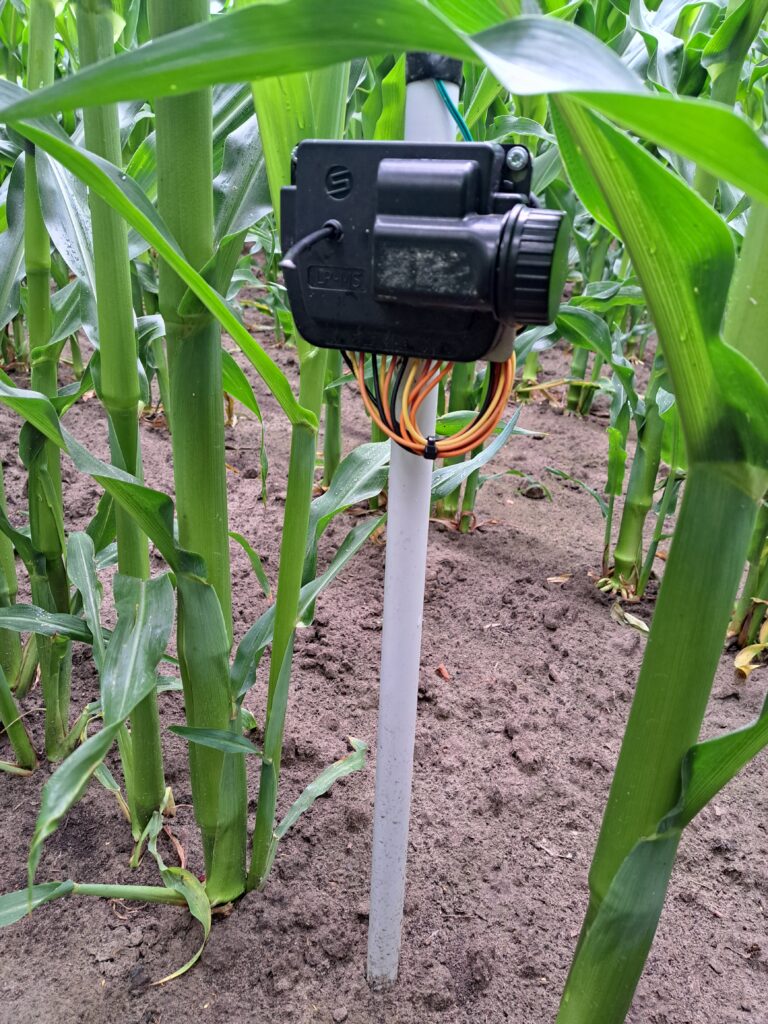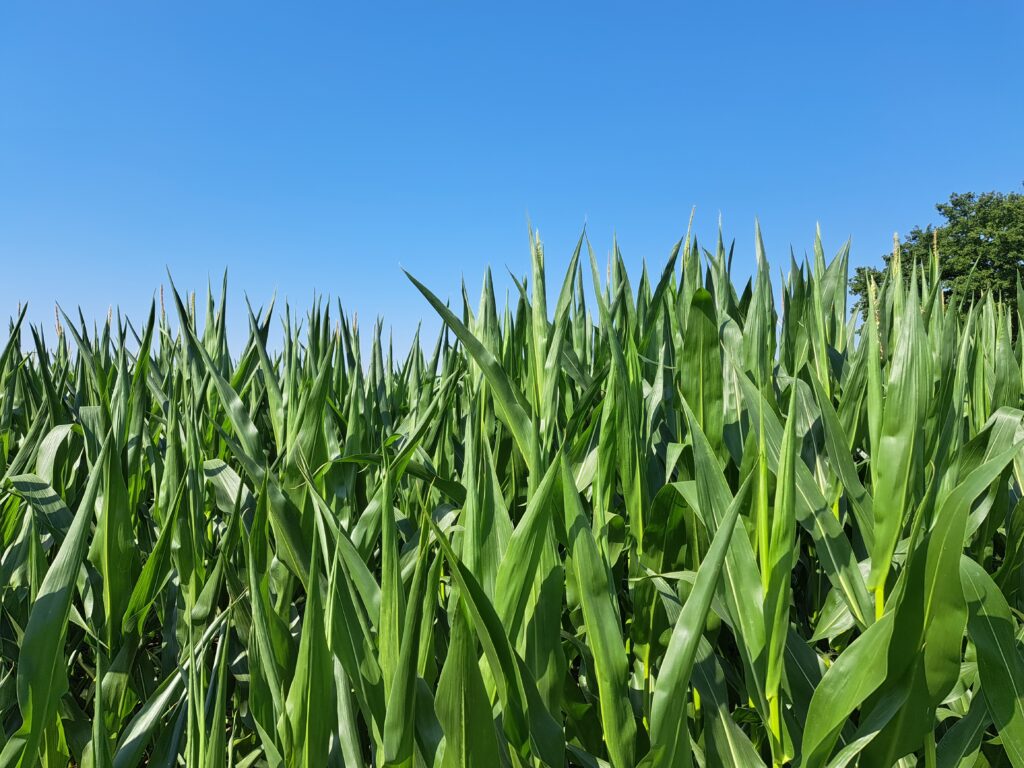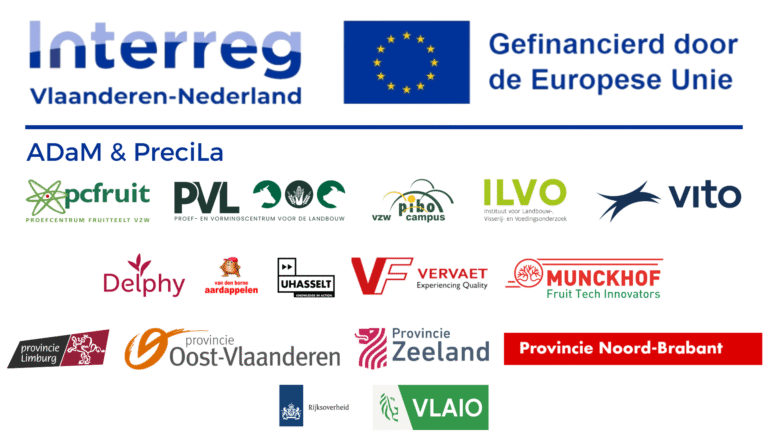After 2 wetter years, farmers faced drought again this spring. However, not everywhere on a plot the drought threshold is crossed as early. We can respond to this to grow even more efficiently. Variable irrigation offers a smart and sustainable solution.
In the last 2 years, we were mostly faced with flooding. This spring, drought took over again. Thus, this year significant precipitation deficits of over 200 mm already locally are being recorded again (https://www.waterinfo.vlaanderen.be/). To still get a good yield from agricultural plots, irrigation offers opportunities.
However, irrigation is under social and policy pressure. Think, for instance, of capture bans or the legal changes around permits for groundwater extraction. So it is important to use our water as efficiently as possible.

How variable irrigation?

Variable irrigation allows you to put water where it is needed. Variable irrigation or sprinkling can be done in many ways. For example, there are reel irrigation systems, which allow you to demarcate zones depending on the needs and reel faster or slower to vary the watering rate. Some examples of such systems are the Raindancer pro, Sime elektrorain and the IrriMOP. With drip irrigation, in turn, different irrigation zones can be used, each controlled by a separate solenoid valve.
However, in addition to these techniques, plot and crop information is needed to adjust variable watering. For this, satellite images, soil scans and soil moisture sensors can serve. WatchITgrow, for example, offers free irrigation task maps based on satellite images.
Drip irrigation in maize
Several variable precision agriculture applications are being tested within the Interegg project ADaM & PreciLa, funded through the European Regional Development Fund. In addition to variable fertilisation, seeding or spraying applications, irrigation is also covered.
For instance, as part of the project, drip irrigation was laid between maize rows for the third year in a row. This uses water more efficiently than the commonly used reel irrigation and consumes less energy due to the lower working pressure. The drip hoses were always laid 1.5 m apart. Laying a drip hose between every 2 maize rows, previous research showed no real added value given the significantly higher costs.

To allow variable irrigation, the plot was divided into 4 irrigation zones based on satellite images of previous dry crop years. The zones were each equipped with suction tension sensors. These measure the negative pressure that must be exerted by the plant roots to extract water from the soil, also known as soil water potential. This gives us a good picture of water availability for the crop. The data are centralised on a dashboard where they can be easily consulted. Alarm thresholds can also be selected via the same dashboard, which also controls the pump and solenoid valves.
Variation in plot = variation in needs
For maize, efforts were made not to exceed the intervention threshold for drought stress (about -50 kPa). This allows the maize to fulfil its full potential. This year, the driest zone was irrigated for the first time as early as 12 June. At the wettest zone, however, the intervention threshold was not reached until 25 June. Thus, at the driest zone, 32 mm more water was already given than the wettest zone. This 32 mm would thus be saved compared to equal irrigation over the entire plot. However, sensor measurements also allow timely intervention even before the first drought stress occurs. Thus, yield loss can be avoided. However, things can move quickly with the high temperatures we experienced in late June/early July. The maize can easily evaporate 6 mm of water on such days, and curling leaves are not far away.
However, it remains to be seen what effect variable irrigation will have on final yields. During the previous crop year, the wettest zone ended up with the lowest yield (1.5 tonnes dry matter/ha less). This was then probably caused by some waterlogging and not the very limited irrigation on the dry zone. Similarly, turnout was found to be 6.5% lower at the wet zone. With proper irrigation control, we hope to obtain similar yields on the drier and wetter zones this cropping year. Then we can demonstrate that by using water efficiently, where needed, we can save on water consumption without sacrificing yield.

